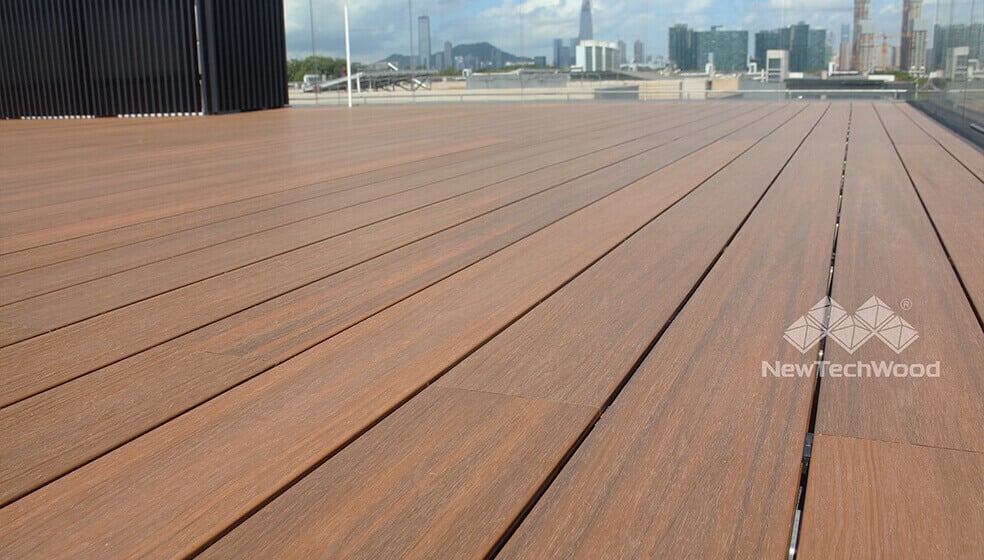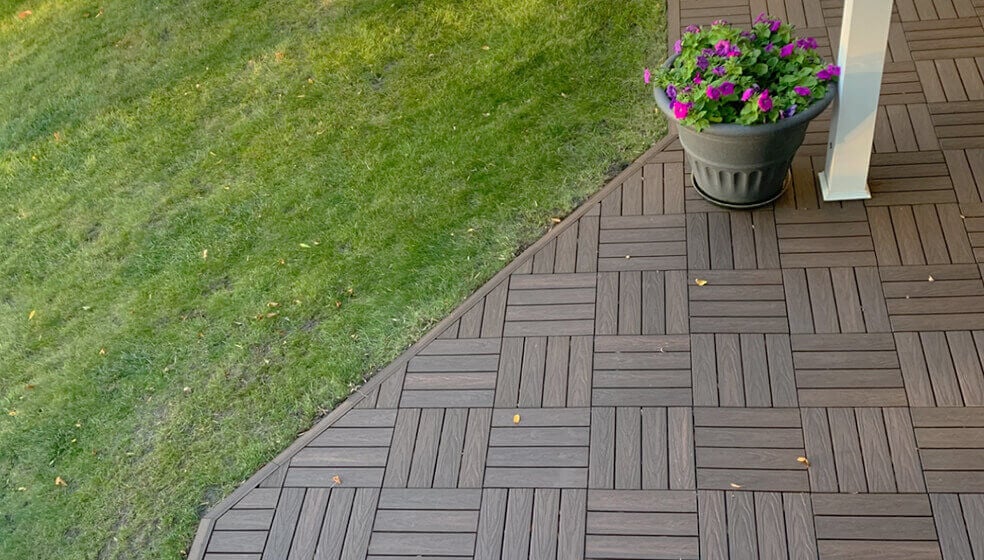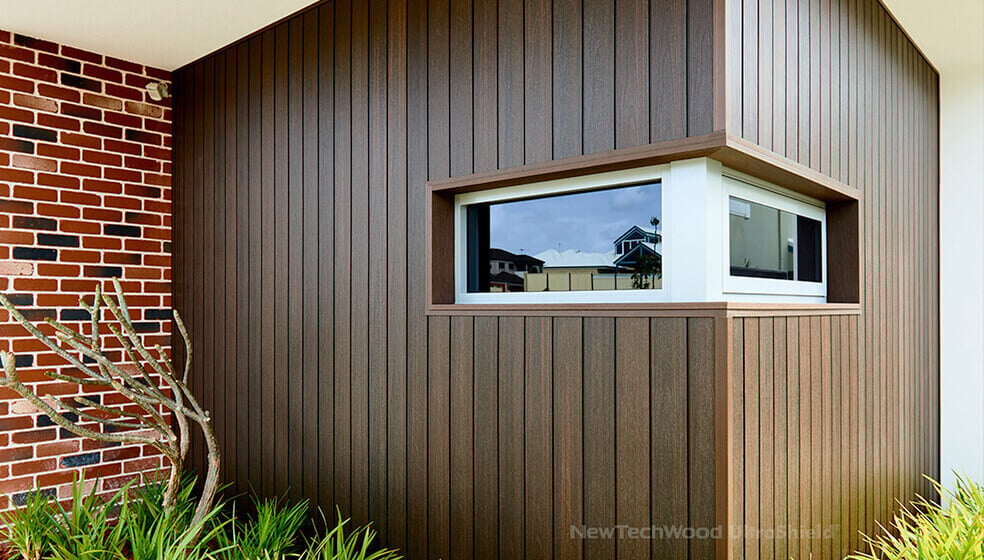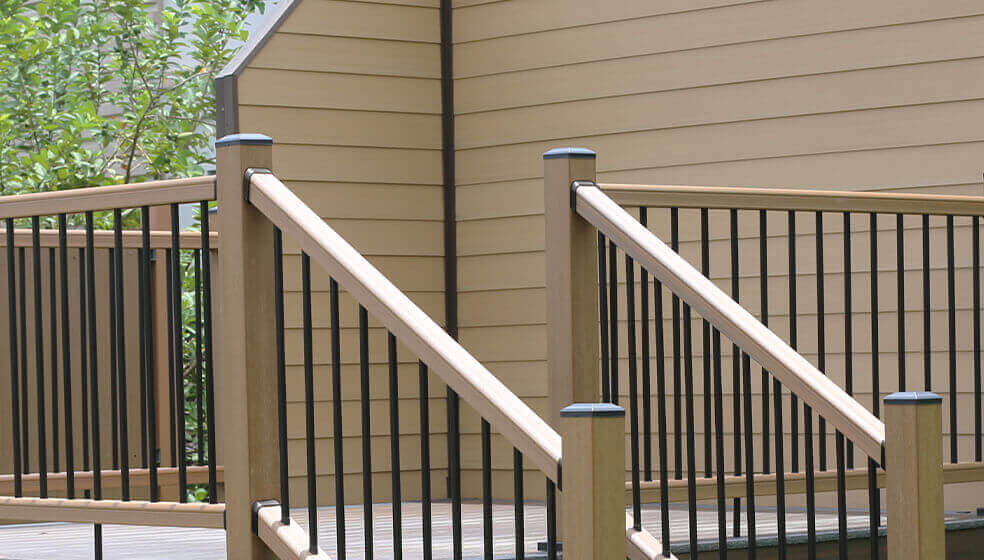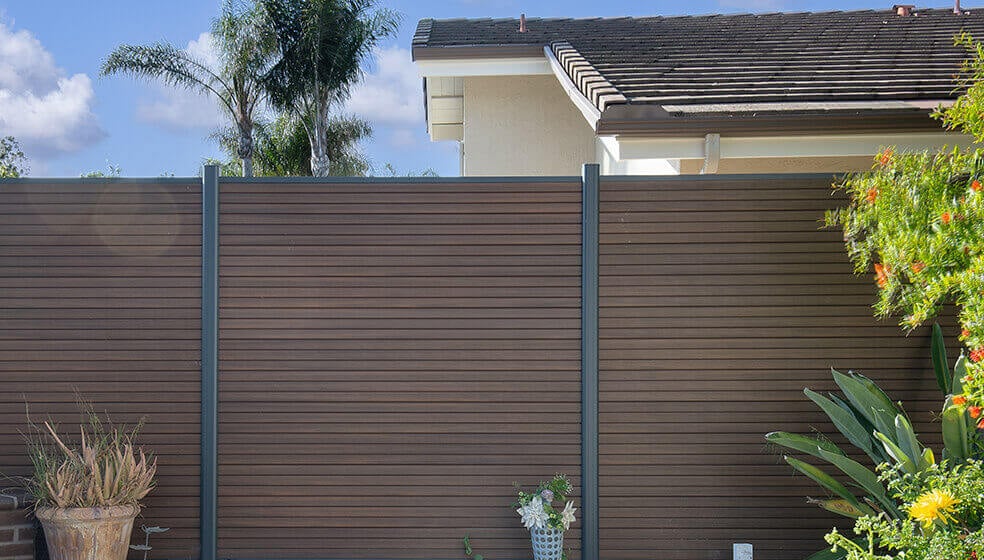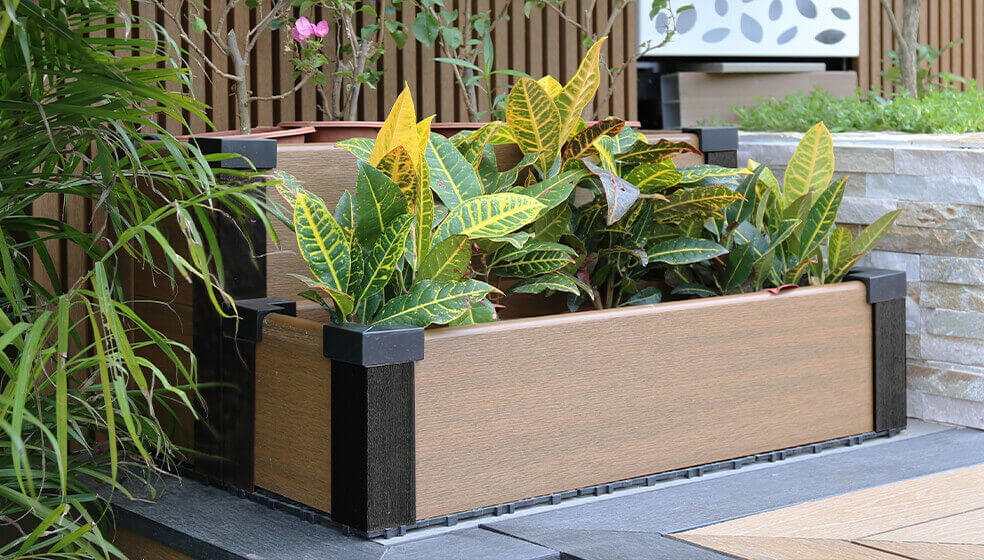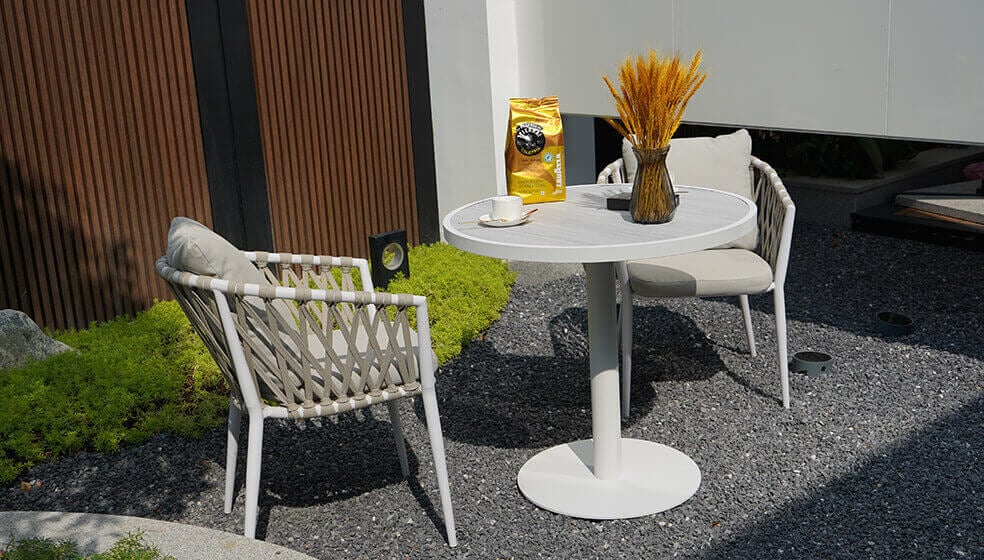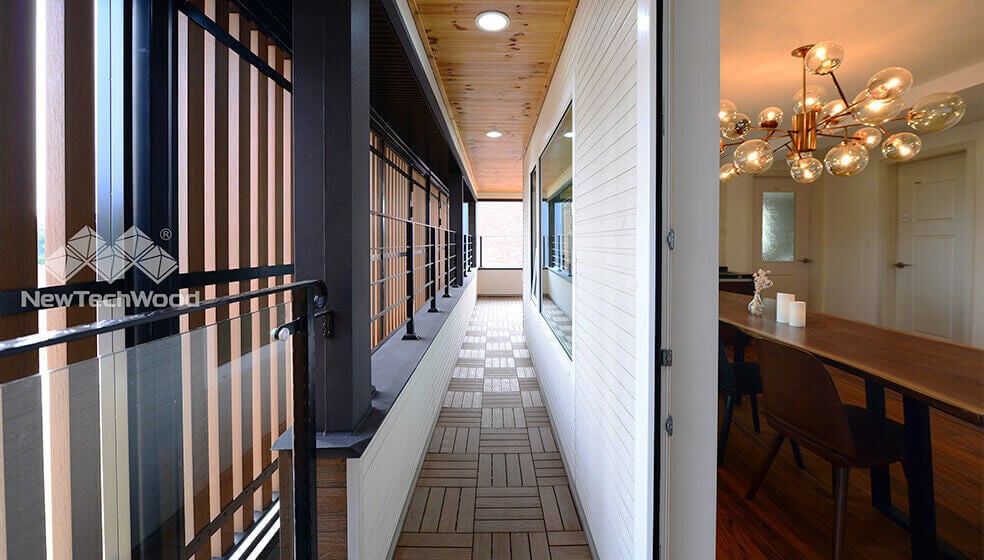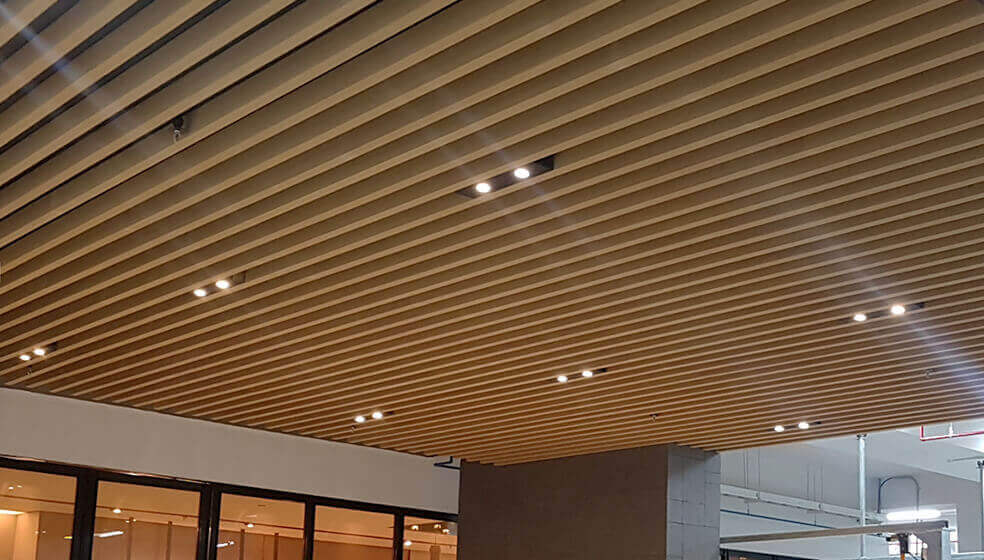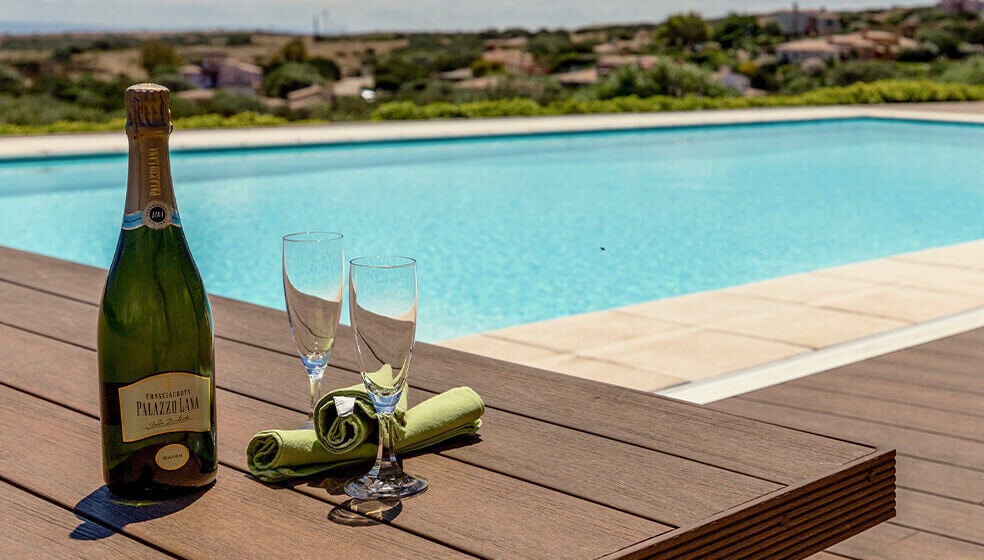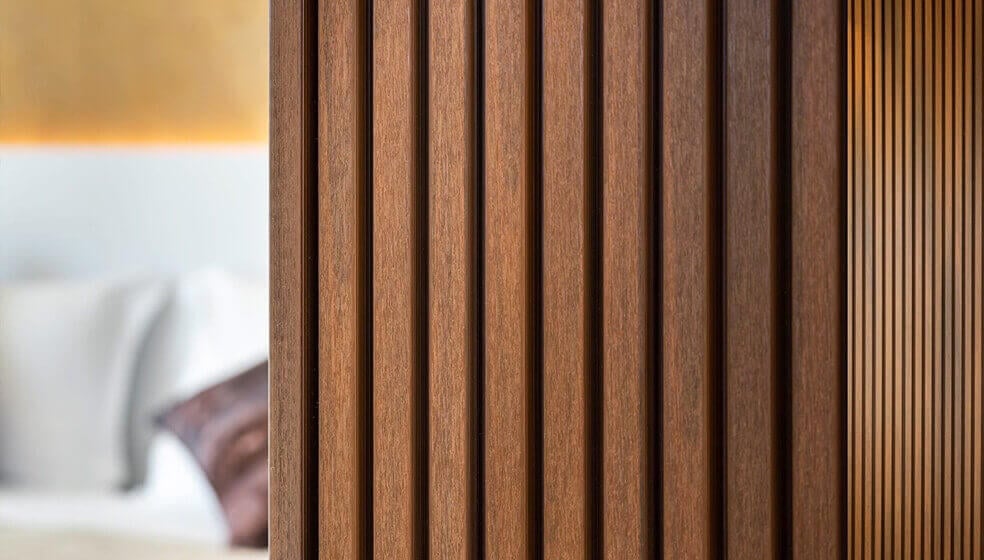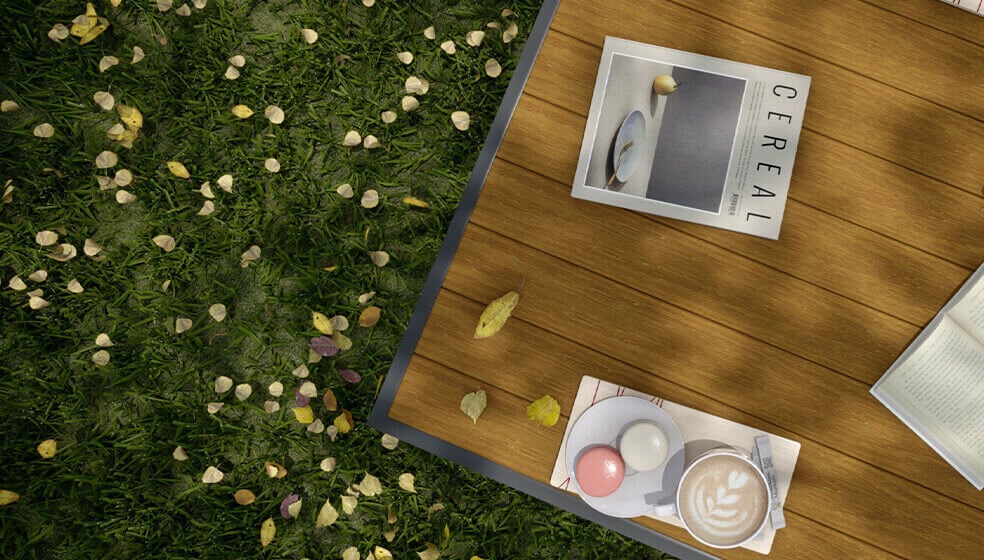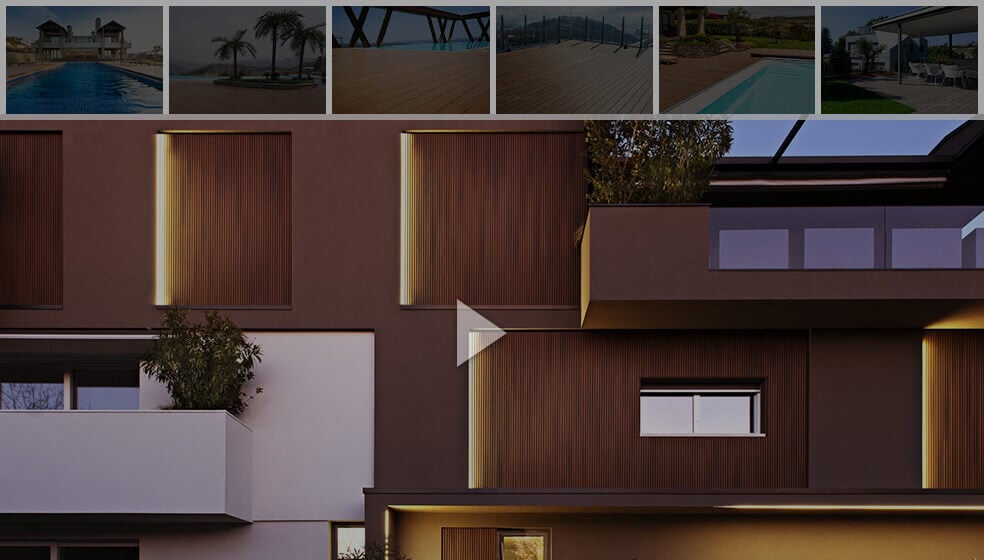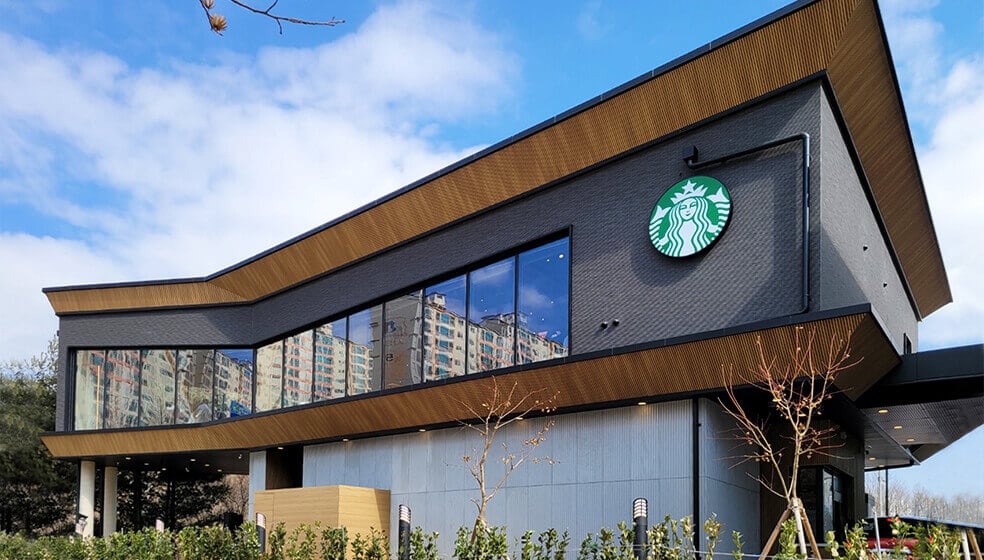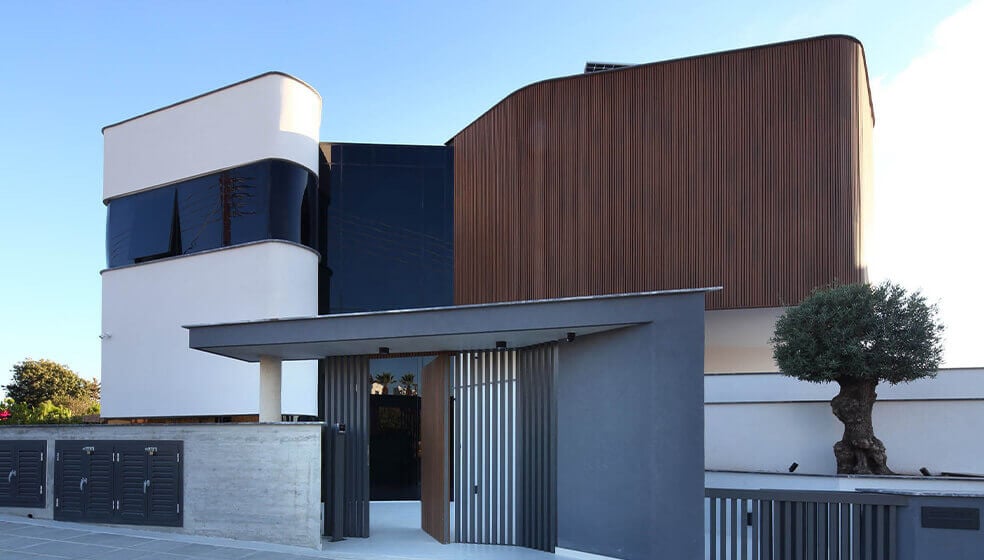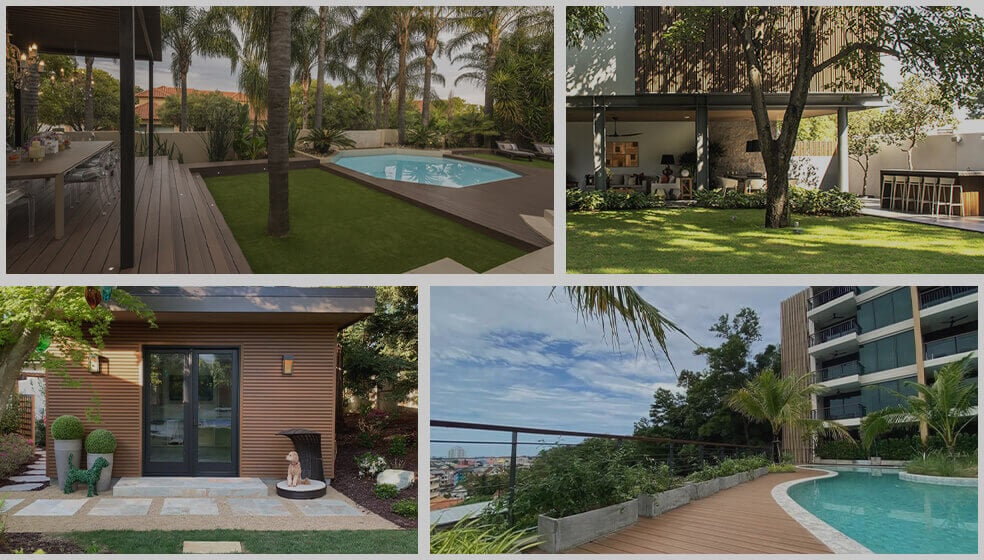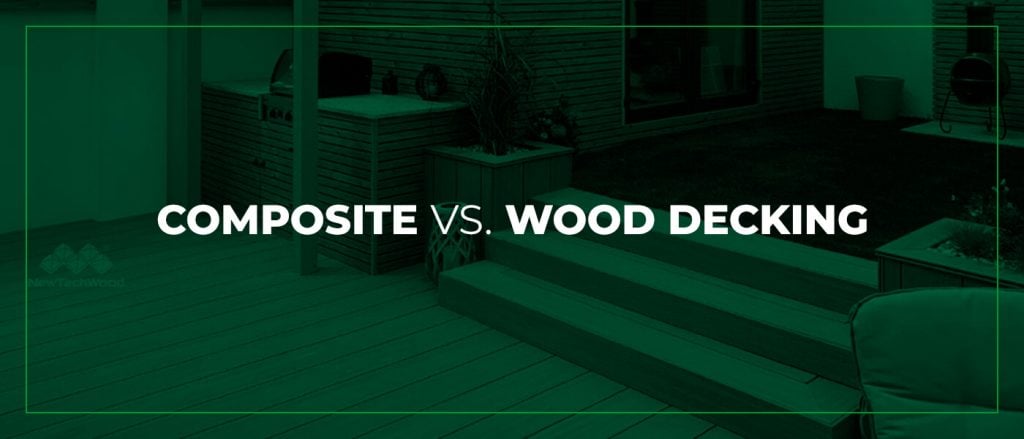
If you’re planning to build a deck on your property, one of the first important decisions you’ll have to make is your decking material. The two main types of decking material are wood and composite, each of which offers different benefits. While wood decks cost less and offer that authentic wood look, composite decks last longer and require less maintenance.
Discover the pros and cons of each decking material below to help you compare composite decking versus wood. 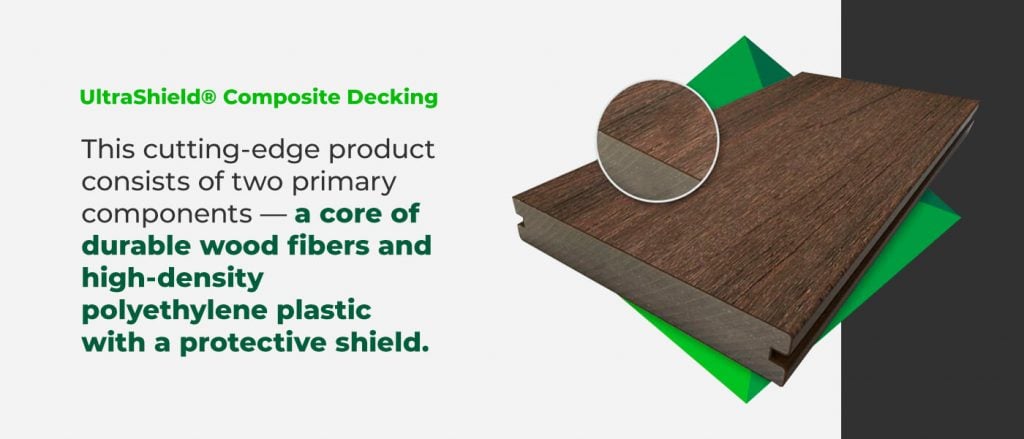
What Is Composite Decking?
Composite decking — in the most general sense of the term — refers to decking made of wood, plastic and bonding agents that form a material that’s stronger, more durable and longer-lasting than traditional wood. Each brand uses slightly different ingredients for its composite decking materials, and some offer better performance than others.
One of the industry’s most innovative products is NewTechWood’s UltraShield® composite decking. This cutting-edge product consists of two primary components — a core of durable wood fibers and high-density polyethylene plastic with a protective shield. This protective shield is a polymer outer shell that wraps around the board completely, encapsulating it in an impenetrable layer that makes it highly resistant to staining, fading and scratching. This quality decking material features:
- A co-extruded cap: UltraShield is a capped plastic-wood composite, meaning it has a sophisticated, durable shield that goes around all sides of its core. The high-temperature extrusion process applies to the core and shield at the same time and doesn’t use adhesives or chemicals.
- A composite core: This core comprises carefully picked recycled materials and extremely dense recycled hardwood and softwood fibers, providing it with enhanced durability and strength. It’s also 100% recycled.
The shield features a sophisticated engineering polymer that helps protect the boards against:
- Splitting: UltraShield provides an impermeable layer to prevent splitting on the board’s surface. This feature is one reason UltraShield decking lasts longer than regular uncapped composite decking.
- Stains: Liquids like coffee, wine and soy sauce are notorious for leaving stains on many surfaces, including decks. But if you spill one of these substances on UltraShield composite decking, no staining will occur because the substance cannot be absorbed. This stain resistance also makes UltraShield decking easy to maintain and clean.
- Mold growth: UltraShield prevents mold and mildew from growing on your board and eating at it, meaning this fungus will never be a threat to your decking. Keep in mind that mold can still grow on water on the board’s surface, but you can easily remove this mold by spraying it with a hose or wiping it away with a broom.
- Fading: The shield’s unique formulation makes sure it retains its color for longer than conventional composite decking materials. While color changes can occur after many years, these changes are very minor.
- Oiling or painting: The shield’s availability in various colors means you’ll never need to sand, oil or paint your deck to complement your home.
Traditional Wood Decks
Homeowners interested in a deck installation will often consider the option of a traditional wood deck. Traditional wood decks come in several varieties, including:
Pressure-Treated
Pressure-treated wood refers to wood that has been treated with chemicals under pressure to protect it against rot, termites and fungal decay. Perhaps the most common pressure-treated wood is yellow pine, as it can undergo this chemical process rather easily.
Some advantages of pressure-treated wood include:
- It’s readily available: You won’t have any trouble finding pressure-treated wood or have to order it far ahead of time.
- It’s affordable: Pressure-treated wood is cheaper than standard hardwood.
- It’s durable: Excess moisture will not cause pressure-treated lumber to decay.
This treated wood is also associated with a number of drawbacks, which include:
- It must be regularly maintained: Pressure-treated decks must be regularly cleaned and sealed or they will fall apart quickly. If you don’t have the time to dedicate to maintaining your pressure-treated wood deck, you’ll want to consider other options.
- It’s not 100% stable: This potential con means there’s a high chance pressure-treated boards will crack, split or warp.
- It’s not 100% eco-friendly: Pressure-treated wood contains carcinogens and other toxic substances, making it not the most eco-friendly option. Furthermore, if this lumber is burned, toxins will be released into the atmosphere.
- You can’t install it next to a garden: Pressure-treated decks may encourage leaching, which means any nearby flowers and vegetables could be affected by the treatment chemicals.
Tropical Hardwoods
Tropical hardwoods refer to varieties of wood from outside North America. Tropical hardwoods are known for their high quality and elegant look, which is due to their unique color. Other characteristics and benefits include:
- It’s readily available: You can find tropical hardwoods at practically any wooden deck builder.
- It’s robust and sturdy: Tropical hardwoods can stand up to harsh natural elements. They’re not susceptible to stains, cracks or chipping and won’t rot, even when exposed to the ground.
- It’s long-lasting: Tropical hardwood decks can last for many decades, sometimes up to three-quarters of a century.
- It’s dimensionally stable: This feature means tropical wood won’t expand or contract as a result of temperature fluctuations.
- It contains no toxic materials: Even if you burn untreated tropical wood, it won’t release anything harmful into the atmosphere.
It is worth noting that tropical hardwoods are particularly heavy and can be difficult to carry around. Some other possible downsides include:
- Installation can be time-consuming: Installation and building decks with tropical hardwood is often not a quick project.
- It’s pricier than other wood options: Compared to softwood and pressure-treated pine, tropical hardwoods are considerably more expensive, with the cheapest hardwood often costing twice the price of pressure-treated pine.
- It doesn’t accept stains as well as other options: If you opt for a tropical hardwood deck, it’s best to keep it its original color, as it can be quite a challenge to stain it. You’d need to seek professional services if you want to change the color of your tropical hardwood decking.
Softwood
Softwood comes from coniferous trees, with popular examples including red cedar, Scandinavian redwood, larch, Douglas fir and spruce. The most common softwood used for decking is redwood or red cedar.
Of the three traditional wood materials, softwood is the most affordable. Other benefits include:
- It’s easy to stain: Unlike tropical hardwoods, softwoods receive a stain very easily.
- It’s sturdy: Softwood decking is resistant to decay, rot, insects and harsh natural elements.
Note that softwoods have several disadvantages, notably their short lifespan, which is not even two decades. Other potential downsides include:
- It requires frequent maintenance: If you don’t regularly maintain a softwood deck, its lifespan may be drastically shorter.
- It is not meant for heavy traffic: Due to its porous nature, softwoods can scratch easily. If your deck will see a lot of use, you’ll want to go with a more durable option.
- It has a more ordinary appearance: Softwood decking is not as luxurious looking as tropical hardwoods or quality composite deck materials.
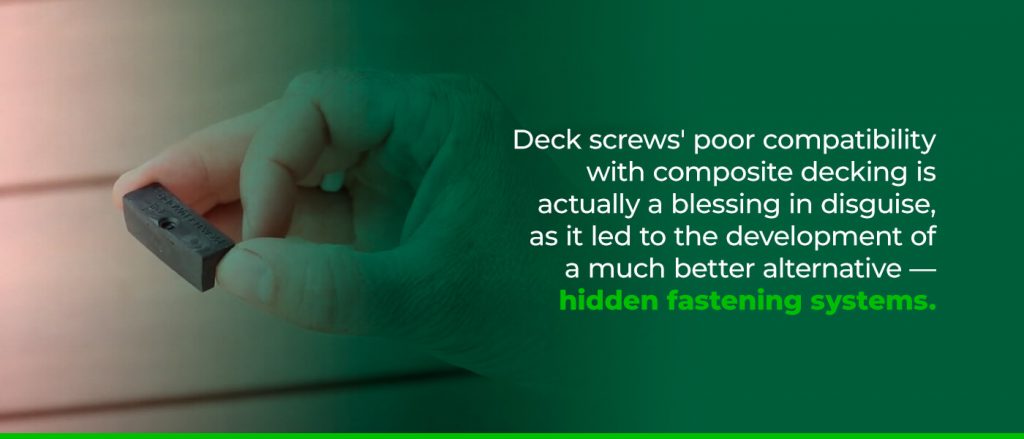
Installation and Construction
To install a traditional wood deck, you will most likely be using deck screws. Deck screws can also be used on composite decks, but they’re often difficult to work with. Even if you install the screws perfectly, they are not a good aesthetic choice. Screws on composite decks tend to clutter up the material, which otherwise has a smooth, clean look.
Deck screws’ poor compatibility with composite decking is actually a blessing in disguise, as it led to the development of a much better alternative — hidden fastening systems. These systems provide a stable solid connection to the deck frame without disrupting the smooth, clean surface of the deck. Instead of inserting deck screws through the tops of all the deck boards, you can instead use clips, which you first attach to the framing boards before attaching the decking to the clips.
In addition to their aesthetic benefits and the strong connection they provide, hidden fastening systems also make installing your deck quick and easy. They are designed to create a uniform space between each composite deck board, making installation simple.
Durability and Maintenance
While composite decking is designed to resemble natural wood, some homeowners still prefer the authentic look of real wood. But despite wood decking’s durability, it still is susceptible to natural elements and therefore usually requires a full-on retreatment every couple of years.
How Long Does Composite Decking Last? How Strong Is It?
Composite decks consist of long-lasting, durable materials that resist stains and stand up to harsh elements and natural wear and tear for as long as 50 years. Whereas natural wood decks tend to need repairs after 10 to 30 years due to rotting, splintering or insect damage, composite decks are strong and are not susceptible to any of these things.
Composite decks also come with resistance to UV damage, meaning they won’t lighten or fade to the same extent as natural wood over time. Even if your composite decking does begin to fade as a result of exposure to direct sunlight, you can still paint, seal or stain it to look like new again — a fact that many people are unaware of.
Even though composite decking is designed to imitate the look of natural wood, some homeowners still prefer the authenticity of real wood. Despite wood decking’s durability, it still requires frequent maintenance. Most wood decks require you to sand, clean, stain or paint and seal them every couple of years, and neglecting these tasks will lead to fading and eventual rotting.
Price of Composite vs. Wood Decks
If you’re like most homeowners, price will be a major consideration when it comes to choosing your decking material. When comparing prices, it’s important to consider the cost of a deck over its lifetime, not just the upfront cost.
Wood Decks
When it comes to wood decking, the cost depends primarily on the following three factors:
- Size
- Wood type
- Difficulty of installation
For pressure-treated wood like Southern yellow pine, for instance, budget between $15 and $25 a square foot. For cedar, redwood and other high-end options, expect to pay between $25 and $30. These prices include materials and installation costs. At the lower end of these price ranges, you can have a basic deck installed without features like benches.
To give you a better idea, if you plan to build a normal deck measuring 16′ by 20′, you should expect to pay between $4,800 and $8,000 for a pressure-treated pine deck and between $8,000 and $9,600 for redwood or cedar.
Composite Decks
Generally speaking, composite decks cost more than their natural wood counterparts, with costs ranging from $30 to $45 per square foot. For a 16′-by-20′ deck, this would range between $9,600 and $14,400. If you’d like extra features like benches and railings, expect to pay at the upper end of this price range.
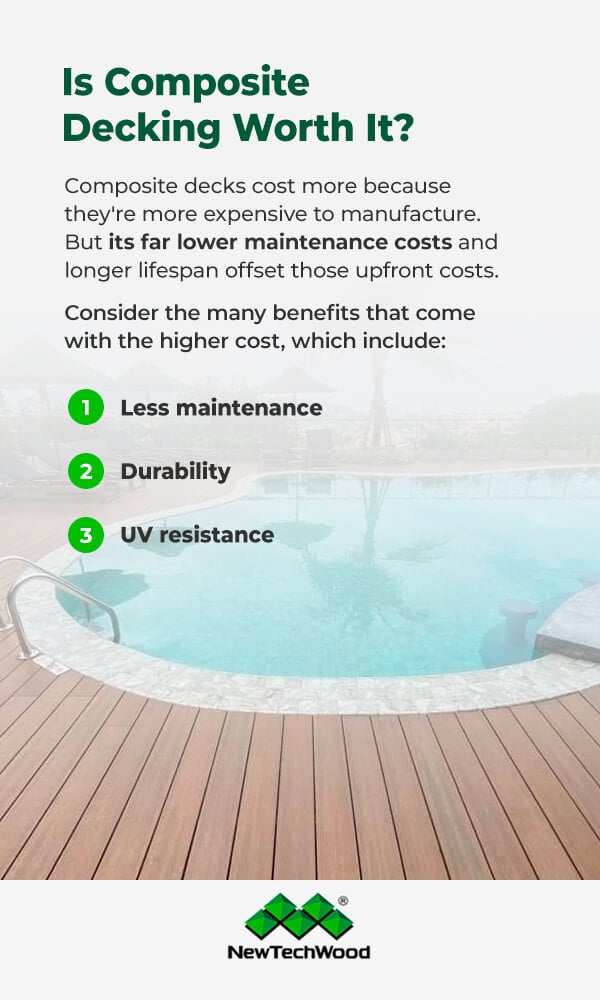
Is Composite Decking Worth It?
When you notice the higher price tag, you may be wondering why you should pay more. Composite decks cost more because they’re more expensive to manufacture. But its far lower maintenance costs and longer lifespan offset those upfront costs. When you invest in a composite deck, consider the many benefits that come with the higher cost, which include:
- Less maintenance: Composite decks need much less maintenance. You never have to seal, sand or stain a composite deck. All you have to do is clean it a couple of times every year to keep it looking its best.
- Durability: Composite decks are resistant to stains and can withstand harsh weather. No splintering or rotting will occur.
- UV resistance: Unlike natural wood, a composite deck won’t lighten or fade over time. It will retain its original color for decades.
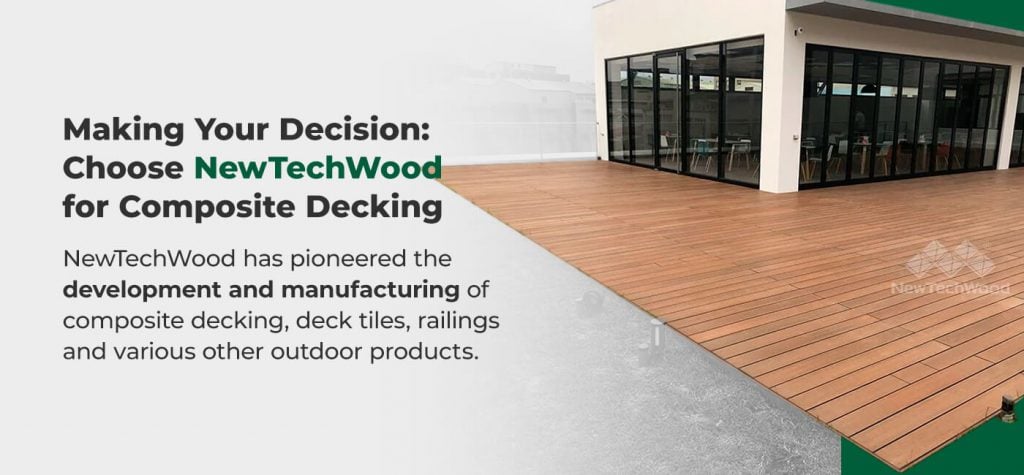
Making Your Decision: Choose NewTechWood for Composite Decking
In the end, the type of decking you choose will depend on your budget, your tastes and the amount of time you’re willing to spend on maintenance. If you like living without maintenance, consider a composite deck. If you prefer the appearance of natural wood and are fine with doing some occasional upkeep, consider materials like cedar. If your main goal is to keep down costs, you’ll want to go with pressure-treated lumber.
If composite decking materials sound ideal for your applications, choose NewTechWood. NewTechWood has pioneered the development and manufacturing of composite decking, deck tiles, railings and various other outdoor products. Since 2004, we have been leaders in the wood plastic composite industry and have been committed to developing products that make spaces around the world more beautiful and functional.
If you are interested in learning more about our products or would like to request a sample, feel free to contact us using our online form. We look forward to enhancing your outdoor space!



